Backend #
What is a protocol? #
- A system that allows two parties to communicate
- A protocol is designed with a set of properties
- Depending on the purpose of the protocol
- TCP, UDP, HTTP, gRPC, FTP
- The application protocols (HTTP/1.1, HTTP/2, HTTP/3) run on top of transport protocols (TCP, UDP)
Protocol properties #
- Data format
- Text based (plain text, JSON, XML)
- Binary (protobuf, RESP, h2, h3)
- Transfer mode
- Message based (UDP, HTTP)
- Stream (TCP, WebRTC)
- Addressing system
- DNS name, IP, MAC
- Directionality
- Bidirectional (TCP)
- Unidirectional (HTTP)
- Full/Half duplex
- State
- Stateful (TCP, gRPC, apache thrift)
- Stateless (UDP, HTTP)
- Routing
- Proxies, Gateways
- Flow & Congestion control
- TCP (Flow & Congestion)
- UDP (No control)
- Error management
- Error code
- Retries and timeouts
Why do we need a communication model? #
- Agnostic applications
- App doesn’t need to to know network medium
- Otherwise we need an App for WIFI, ethernet vs LTE vs fiber
- Network Equipment Management
- Without a standard model, upgrading network equipments becomes difficult
- Decoupled Innovation
- Innovations can be done in each layer separately without affecting the rest of the models
OSI Model #
7 Layers each describe a specific networking component:
- Layer 7: Application - HTTP/FTP/gRPC
- Layer 6: Presentation - Encoding, Serialization
- Layer 5: Session - Connection establishment, TLS
- Layer 4: Transport - UDP/TCP
- Layer 3: Network - IP
- Layer 2: Data link - Frames, Mac address Ethernet
- Layer 1: Physical - Electric signals, fiber or radio waves
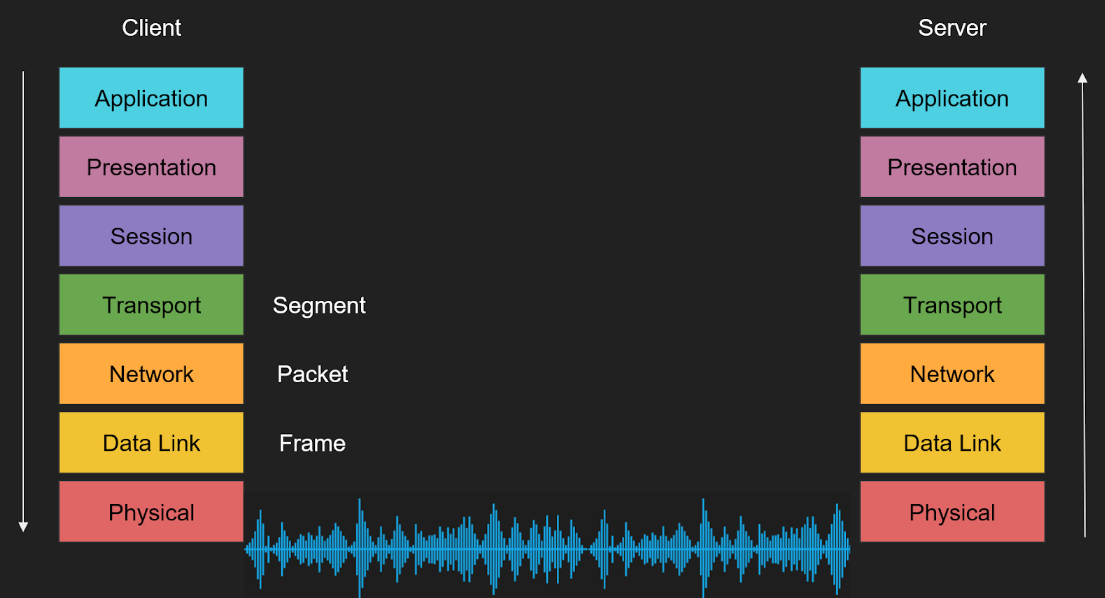
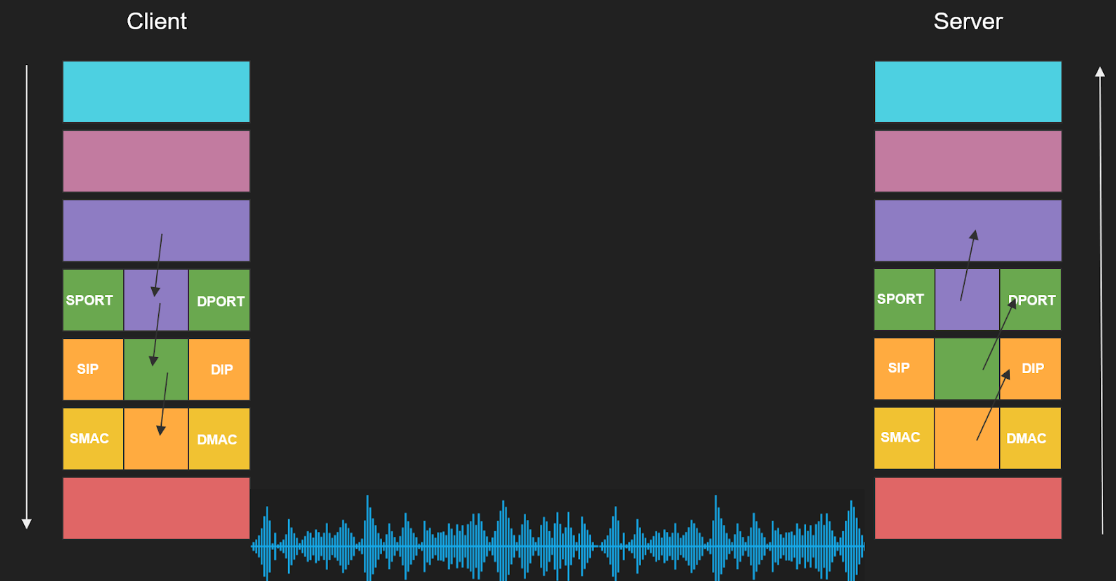
Data across network #
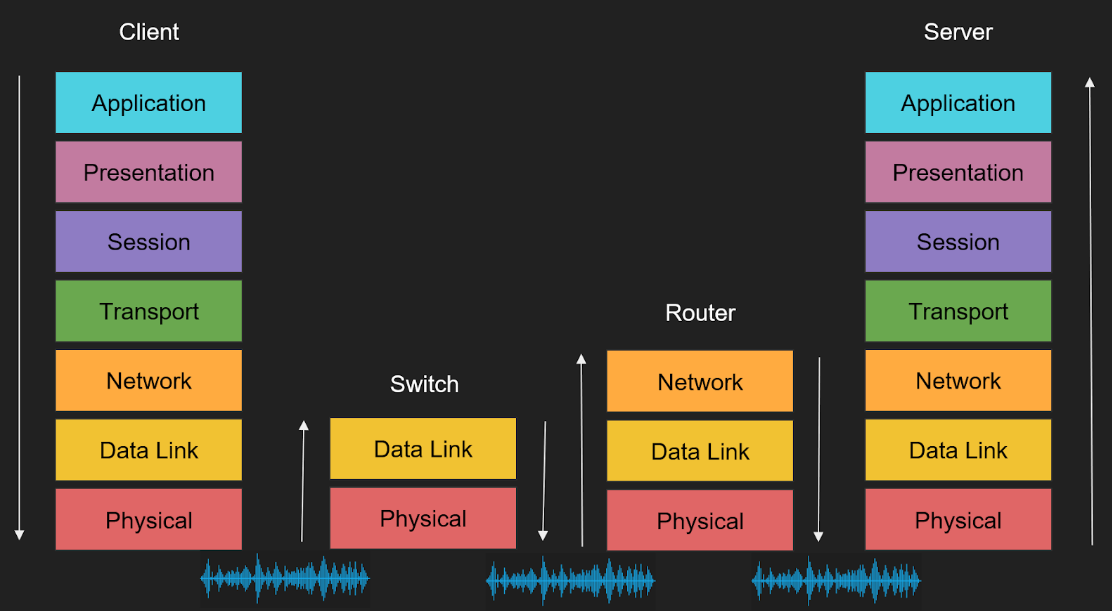
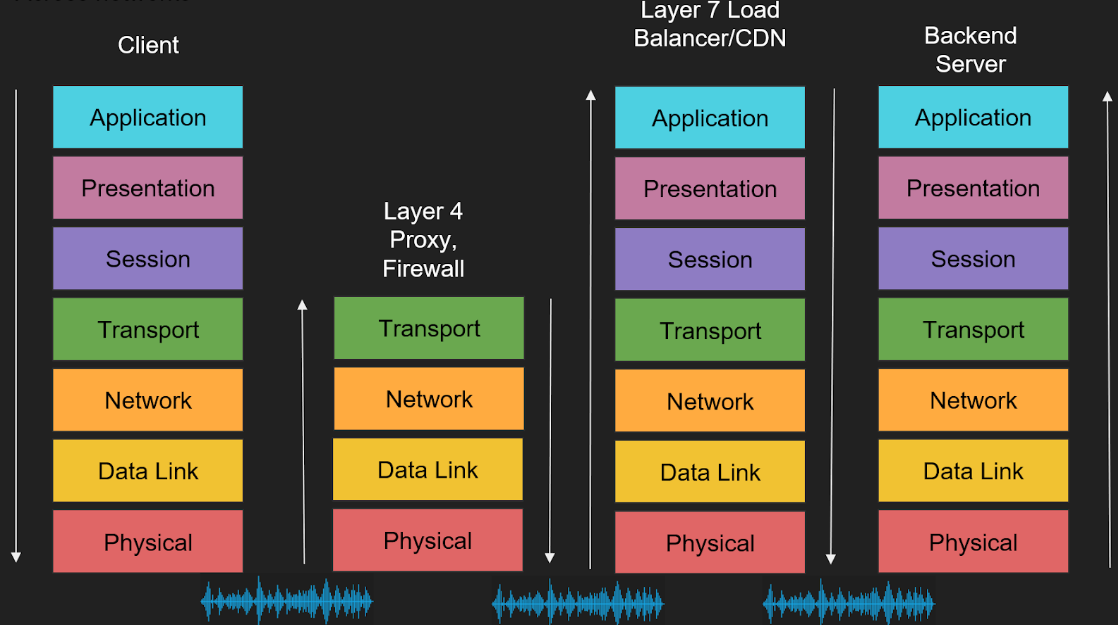
TCP/IP Model #
Much simpler than OSI just 4 layers
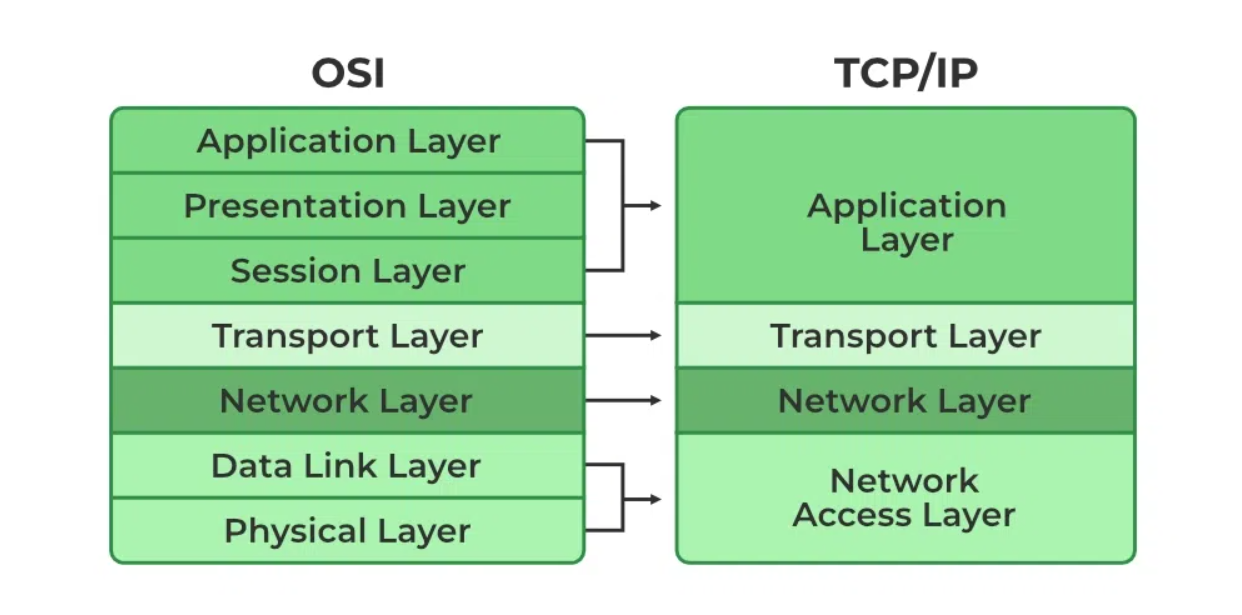
Why #
- OSI Model has too many layers which can be hard to comprehend
- Hard to argue about which layer does what
- Simpler to deal with Layers 5-6-7 as just one layer, application
- TCP/IP Model does just that
Reference #
- Geeksforgeeks: TCP/IP Model (21 Jul, 2023)
- Udemy: Fundamentals of Backend Engineering (Feb, 2024)